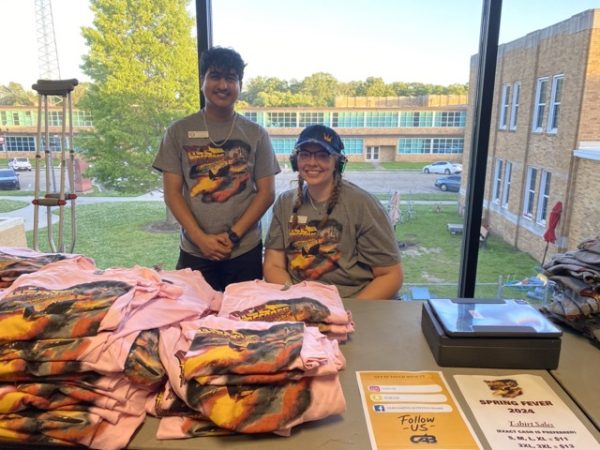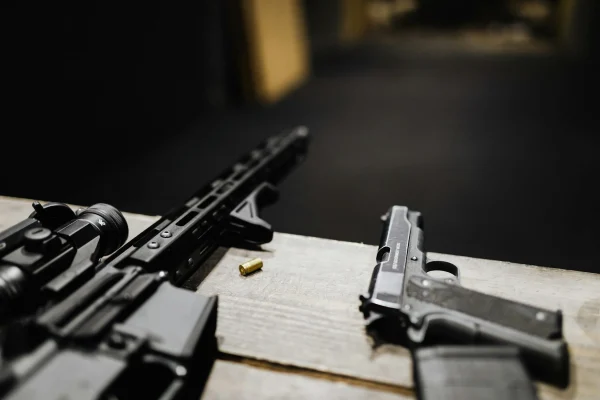Museum issue about lack of clarity
April 10, 2017
Two weeks ago, a frustrated museum curator posted a status on Facebook saying the ULM Museum of Natural History must find a new off-campus home for millions of research specimens, or else they would be destroyed under orders of administration. What really got people talking, though, was that the status said the specimens had to be moved to make way for a new track.
The post lit a national flame and became a debate of “science vs. athletics.” Administration only added to the heat when they clarified that, yes, the collections may be destroyed, but wouldn’t say initially that this possibility was due to a track and field update.
Since then, several spectators have taken sides. There are those still angry that ULM would even dare consider destroying the specimens. Then there are those who largely side with administration, saying that this is something the university has no choice but to do.
However, this issue is more about messy project management and shifting academic project priorities by administration than anything else. Science vs. athletics isn’t the real debate at hand, ill-executed, vague administrative decisions are.
There are many sides to this story. It’s complicated, for sure. And administration isn’t being as clear as they should be, which is causing people to look for answers where there are none. Here are clarifications of some of the more muddled aspects of this issue, tackling one misinformed defense of administration at a time.
Defense: The specimens are stored in Brown Stadium, which is an athletic facility. Curators knew they would only be able to store the specimens in this building temporarily, so they should have been prepared to move them.
Clarification: This is partially true. According to athletic director Brian Wickstrom, the specimens have been stored in Brown Stadium since before he came in 2013. And yes, curators always knew this was a temporary fix. In fact, curators completely understand why the specimens must be moved out of Brown now, according to museum director Thomas Sasek.
The track update and renovations to Brown Stadium are, without a doubt, a good step forward for our school and our athletic programs. Even the museum director agrees.
However, museum curators believed the specimens would be moved to another location on campus once moved out of Brown because administration told them that’s what would happen. In 2013, ULM had plans to expand the museum to include its research collections, which are kept separate from displayed collections, according to a ULM News Center article.
Of course, curators want to keep these specimens on campus because they are considerably valuable. They are a reflection of Northeast Louisiana’s ecosystem that’s been decades in the making. Plus, they bring valuable grant money to our university, and, according to Sasek, once the specimens move off campus, it’s highly unlikely they will ever make it back.
So, when administration said the specimens would have to be moved off campus by mid-July, the curators’ first thought was to try to find a new place on campus for them. Administration gave them 48 hours. There was no place on campus, however, and the curators’ request served as more of a desperate “please don’t do this” than anything else.
Now the collections must be moved in three and a half months to somewhere new. And they will be moved, not destroyed, because they are valuable collections. As soon as two days after the Facebook incident, administration already had several solid offers to take the collections off ULM’s hands, according to Vice President Eric Pani, who has represented administration in this matter.
So, yes, the space in Brown was temporary, and everyone knew it. But curators were told they would be able to keep these collections on campus. Then, that was suddenly no longer an option.
Defense: Administration only just now learned the specimens would need to be moved.
Clarification: The specimens were, of course, stored temporarily and would need to be moved once the renovations to track facilities started. Pani said he found out that the project was approved “near the end of February 2017.”
But renovations to the track have been in the works for a while. Wickstrom has been trying to get funding for the project since he arrived at ULM in 2013 and he even secured a good bit of money last year.
Even though the project still hasn’t been fully approved, administration still should have seen a need for the specimens to be moved earlier than now. The threat administration felt it had to make to destroy these collections comes from a lack of foresight, plain and simple.
Defense: The school has no more money to take care of the collections. This is an issue of state budget cuts which are chipping away at what our university can and can’t do.
Clarification: I hate budget cuts. I’m tired of Louisiana universities having to take them. But I don’t think it’s fair to blame this sudden move of the specimens on Louisiana’s cuts to higher education.
Last year, ULM took budget cuts of over $3 million during the 2015-2016 school year. Right now, higher education across the state faces a potential $18 million cut in next year’s budget already.
This isn’t new, either. Louisiana’s funding for higher education has been shrinking fast and for a long time. But this school still has money.
In fact, the decision to move the specimens was made on the same week ULM announced its SOAR campaign had raised $38.8 million for campus projects such as “research funding…renovations and construction,” according to an article published by ULM News Center.
If you’ll notice, $38.8 million is a little bit more than $3 million. In fact, it’s more than $18 million.
Also, Pani said that although the intent was to move the specimens back onto campus at some point, there are “some other things going on that just don’t allow that to happen right now.”
Essentially, there is a new project that will be announced soon that, to administration, is more important than expanding the museum and keeping the collections on campus.
He said that whatever it is that’s taking the place of the museum expansion is confidential right now, but the project is academics-related and will be announced soon.
ULM has plenty of worthy places to put its money. It has a lot of other projects to take on that might even benefit students more than keeping these collections on campus will. We are clearly still spending money on these other projects, so to say that we don’t have enough resources to keep the specimens on hand is misleading.
Is space an issue? Of course. But you can’t promise that you have the space for something and then say, “oh, never mind.” At one point, we planned to have space to move these collections elsewhere on campus. Why don’t we have that space anymore? Because priorities have changed.
This is not a case of “science vs. athletics,” this is a case of priorities. Administration has decided to invest money, which we have, into something that isn’t the research collections, and they should have been clear about that from the beginning.
Changing priorities are fine and understandable. Most ULM students don’t benefit directly from the collections at all, and most of us are excited to see what is new to come. However, a university decision of this caliber needs to be clear in its purpose and its consequences.
Our university is constantly striving to move forward, which is applaudable, no doubt. But be clear with us. If something has come up that is more important to the administration than keeping research collections, then they should tell us. They shouldn’t try to blame it on other circumstances that, in the end, don’t stack up.








Ka • Apr 11, 2017 at 9:15 am
It’s so sad to read this article. It’s clear that you are much like the administration and do not understand the value that this collection has. Collections like these preserve history for future generations! It is tragic to see people throw things like this aside just so they can build a flashy new track…one they’ll have to rebuild in 10 years probably. If they rehoused this collection properly…they wouldn’t have to do anything else for it for the foreseeable future. It would bring research in and scholars. These people would flock to the university not just for the immediate future but for decades and decades. What will be more valuable in 100 years? This track or this collection?